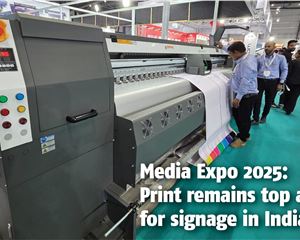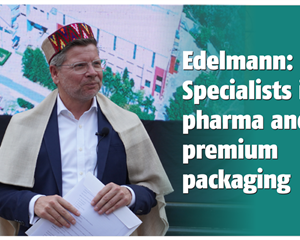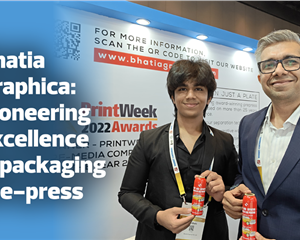How a labeler in Wisconsin, USA, acquired competitive edge
McLoone, a Wisconsin (USA)-based supplier of industrial labels, decals and nameplates, was looking for production efficiency and aimed to penetrate the mid-run self-adhesive decorative label market.
27 Aug 2014 | By PrintWeek India
McLoone wanted to compete for order of up to 2.5-lakh labels as well as print a few hundred units. “We were looking for a solution that would give us the productivity for medium runs as well as one that would reduce cost and setup times for short runs,” says Keith Rosenthal, vice president of McLoone.
“We found SPGPrints’ DSI UV-inkjet label press a perfect fit for our requirement. SPG’s proprietary UV-ink inks allows for printing on plastic substrates; chill drum, which comes as standard, ensures these heat-sensitive substrates remain at a constant, cool temperature; and the modular design give us the flexibility of retro fitting finishing operations, such as lamination, embossing, doming and die-cutting.”
SPGPrints, formerly known as Stork Prints until 1st November 2013, custom-built a 330mm (13”) wide version of the DSI for McLoone as a stand-alone printer with CMYK plus opaque white. With speeds of up to 35m/min (114fpm), the DSI will be responsible for 25% of McLoone’s production, approximately half of the company’s flexible material output.
McLoone’s existing fleet of label presses include flatbed screen printing and thermal transfer machines. The SPG Print DSI is the first large-scale roll-to-roll printer in the company’s 60-year history.
Rosenthal says, the new label press has given his company new levels of flexibility. “We can print all colours in a single pass, eliminating the logistically intensive task of printing each colour on a separate machine, and reducing the production steps from 30 to just six. We can run 20 micro-runs consecutively in less than an hour, whereas before on a screen press, this workload would have taken three days.”
McLoone specialises in identification products such as nameplates and warning labels, for electronic goods including kitchen and garden appliances. It is vital that the label graphics last the lifetime of the products they adhere to. This can be many years, during which they must withstand abrasion, sunlight, and sometimes, extreme outdoor conditions.
Rosenthal exposed SPGPrints’ inks, and the substrates, to numerous substances, from foodstuffs to aviation fuel, as well as accelerated weathering tests. “The excellent test results gave us the assurance that the DSI and its inks could meet the most demanding customer expectations.”
In conclusion, McLoon’s switch from flatbed screen to the DSI has added flexibility and well-placing it to expand into the market for short- and medium-run self-adhesive decorative labels.
This article has been contributed by Mona Desai, Manager for Sales at Stovec Industriespr












 See All
See All